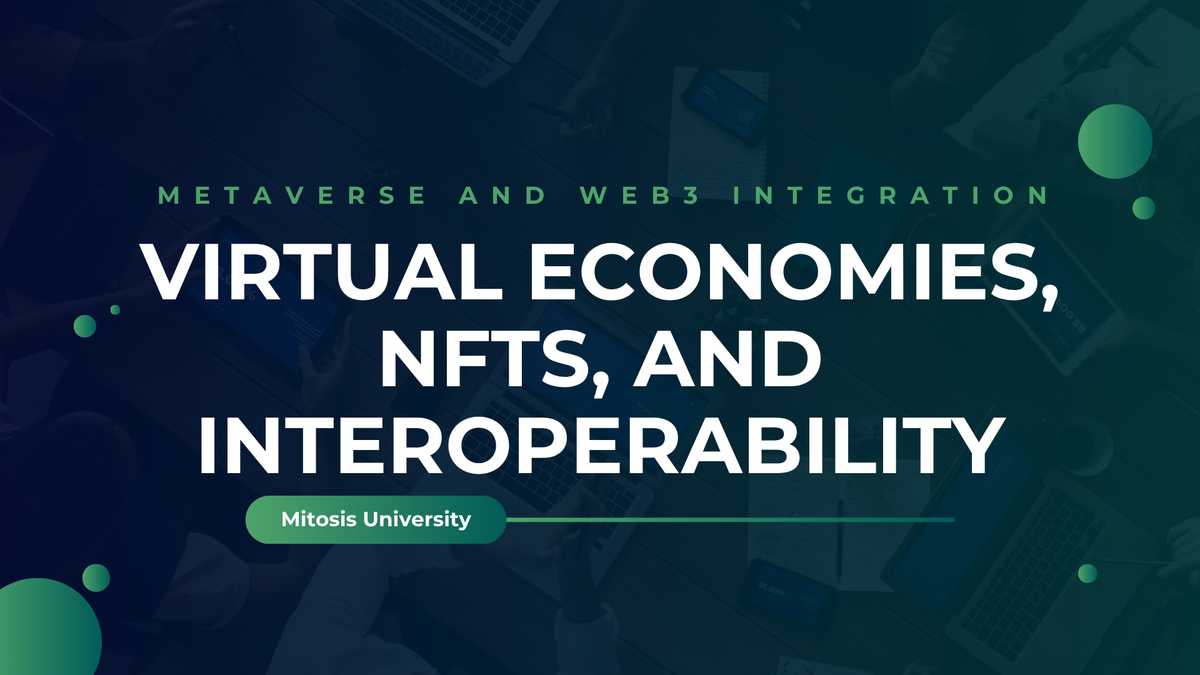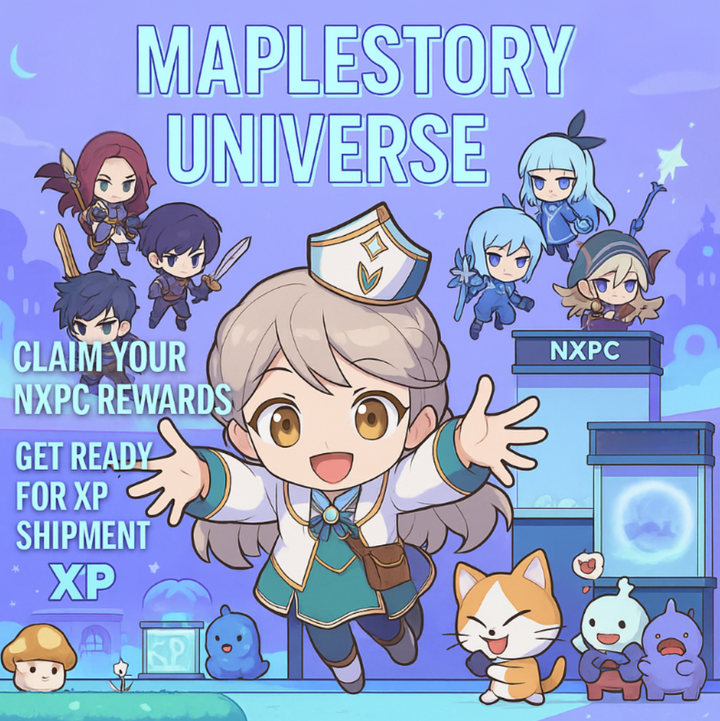Metaverse and Web3 Integration - Virtual Economies, NFTs, and Interoperability

Introduction
The integration of the metaverse and Web3 represents a transformative shift in digital interactions, offering new paradigms for virtual economies, ownership, and connectivity. The metaverse, defined as a collective virtual shared space created by the convergence of virtually enhanced physical and digital reality, encompasses all virtual worlds, augmented reality (AR), virtual reality (VR), and the internet. Web3, the next evolution of the internet, is built on decentralized technologies like blockchain, emphasizing user sovereignty, privacy, and control over data.
Defining the Metaverse and Web3
The metaverse is a device and vendor-independent collective virtual space, driven by advancements in VR, AR, and video technologies, mimicking real-world interactions. It aims to provide immersive, three-dimensional experiences, impacting industries like education, healthcare, and retail, with the potential to significantly influence global GDP in the coming decade. Web3, conversely, is a decentralized network based on blockchain, enhancing user control through decentralization, transparency, and user empowerment. Key components include the semantic web, AI, 3D graphics, spatial web, blockchain, cryptocurrency, and ubiquitous connectivity (broadband, 5G, Wi-Fi, IoT).
The integration of these technologies is motivated by blockchain's features, such as decentralization, immutability, and transparency, which secure users' digital content and data in the metaverse. This synergy is evident in virtual economies, NFT-based ownership, and the pursuit of interoperability across virtual worlds.
Virtual Economies in the Metaverse
Virtual economies are a cornerstone of the metaverse, enabling users to own, trade, and monetize digital assets within virtual worlds. These economies operate independently, powered by digital currencies and NFTs, and are already demonstrating real-world economic value. For example, in Decentraland, users can buy, sell, and manage virtual land and assets using the platform's cryptocurrency, MANA. In June 2021, Republic Realm purchased a piece of virtual land for US$900,000, developing Metajuku, a virtual mall modeled after Tokyo's Harajuku, highlighting the significant value that can be attached to digital real estate.
Another project, Somnia, aims to create a decentralized metaverse that unifies gaming, NFTs, and social platforms into a creator-driven digital economy. It leverages its blockchain, capable of handling up to 500,000 transactions per second, to facilitate seamless economic interactions. Predictions for 2025 suggest it will be a breakthrough year for virtual economies, facilitated by Somnia’s scalability and interoperability. Blockchain-backed economies, as seen in games like Off the Grid, are integrating seamlessly into virtual worlds, sidestepping early criticisms and establishing themselves as viable economic systems.
Virtual economies extend beyond land ownership to include content distribution, virtual goods, and services, creating a rich ecosystem where creators and users can generate revenue. For instance, users can sell virtual clothing, art, or experiences within the metaverse, all facilitated by decentralized technologies. The metaverse's virtual economy is expected to be worth USD$5 trillion by 2030, underscoring its economic significance.
NFTs: The Backbone of Metaverse Ownership
Non-Fungible Tokens (NFTs) are unique digital assets that represent ownership or proof of authenticity of a specific item or piece of content. In the metaverse, NFTs are indispensable for establishing ownership of virtual goods, from real estate to avatars and digital art. They enable users to have verifiable, decentralized ownership of their digital possessions, which can be bought, sold, or traded across different platforms.
For example, in the metaverse, users can own virtual homes, cars, or clothing, all represented as NFTs. Brands like Burberry, Louis Vuitton, and RTFKT have capitalized on this by selling virtual fashion items as NFTs, generating millions in sales. The MLB Virtual Ballpark's season finale featured the seamless integration of Bored Apes, popular NFT-based avatars, into its environment, marking a landmark in metaverse interoperability. NFTs also play a critical role in authenticating identity and possessions, providing robust, decentralized verification necessary for interactions within and across different virtual worlds. Since each NFT is secured by a cryptographic key that cannot be deleted, copied, or destroyed, it ensures secure ownership, essential for the functioning of virtual economies.
Interoperability: Connecting Virtual Worlds
Interoperability is a key feature that distinguishes the metaverse from isolated virtual environments. It refers to the ability of different virtual worlds or platforms to work together, allowing users to move their avatars, assets, and identities across various spaces without friction. This is facilitated by Web3 technologies, particularly blockchain, which provides a standardized way to verify and transfer digital assets and identities.
For instance, the MLB Virtual Ballpark demonstrated interoperability by integrating Bored Apes into its environment, allowing users to use their NFT-based avatars within the ballpark. Similarly, Somnia integrates advanced protocols for seamless asset and identity transfers across ecosystems, aiming to create a truly interconnected metaverse. The article from Improbable notes that in 2025, interoperable identities will be key, with expectations of initiatives like Bluesky and standardized protocols enabling universal digital identities, allowing users to maintain consistent profiles and avatars across platforms.
Interoperability is crucial for fostering a cohesive and user-friendly metaverse, enabling users to have a consistent experience across different platforms, much like navigating the physical world with a unified identity. Blockchain's role in data interoperability addresses technical challenges, ensuring seamless sharing and movement of digital assets. This is particularly important as the metaverse grows, with projects like Decentraland and The Otherside Metaverse promoting open, collaborative virtual worlds.
Real-World Applications and Case Studies
Several projects are already leveraging the integration of the metaverse and Web3 to create innovative applications. Decentraland is a prime example, where users can engage in virtual real estate, commerce, and social interactions, all powered by blockchain technology. The Otherside Metaverse, developed in partnership with Yuga Labs, introduced the Otherside Development Kit to allow external creators to build within its ecosystem, fostering a more open and collaborative virtual world. Somnia, with its high-performance blockchain, unifies gaming, NFTs, and social platforms under a creator-driven digital economy, showcasing the potential for scalable, interoperable virtual spaces.
Virtual assistants are emerging as a new frontier in the metaverse. Web3-enabled virtual assistants can enhance user experiences by managing NFTs, facilitating connections across platforms, and providing personalized interactions. For example, a virtual assistant could help users manage their digital assets, participate in virtual events, or even create and sell NFTs, thereby generating revenue in the metaverse world. This highlights the practical applications of metaverse and Web3 integration in enhancing user engagement and economic activity.
The Role of Web3 Virtual Assistants
Web3 virtual assistants play a pivotal role in the metaverse by respecting user sovereignty and data ownership, aligning with self-sovereign identity principles. They utilize blockchain-based identities for secure, decentralized recognition across platforms, enabling seamless experiences. These assistants can integrate with decentralized finance (DeFi) to manage virtual assets, suggest investments, and execute transactions securely. They also facilitate NFT management, helping users buy, sell, and create NFTs, and use smart contracts to automate processes like virtual property management and event scheduling, enhancing efficiency and user control.
Market Projections and Economic Potential
The economic potential of the metaverse and Web3 is significant, with market projections indicating substantial growth. The Web3 blockchain market is expected to reach $52.89 billion by 2030, while the metaverse market is projected to hit $936.57 billion by the same year, with virtual goods potentially reaching $200 billion by 2026. The metaverse is predicted to impact global GDP by USD$1.4 trillion by 2035, with ad spend expected between USD$144 billion and USD$206 billion by 2030, and a total worth of USD$5 trillion by 2030. These projections underscore the transformative potential of virtual economies and the role of NFTs and interoperability in driving economic activity.
Conclusion
The integration of the metaverse with Web3 technologies is reshaping the digital landscape, offering new paradigms for interaction, ownership, and economic activity. Virtual economies, powered by digital currencies and NFTs, are already creating real value, with platforms like Decentraland and Somnia demonstrating significant economic potential. NFTs underpin ownership, enabling trade of virtual assets and enhancing user engagement, while interoperability, facilitated by blockchain, ensures seamless movement across virtual worlds. As challenges are addressed and future trends unfold, this integration holds the potential to transform industries and redefine how we experience the digital world, fostering a more decentralized, user-empowered internet.
Key Citations
- Techtarget Web3 vs metaverse difference article
- ScienceDirect Blockchain metaverse review paper
- Medium Web3 metaverse digital economy revolution post
- Financial Times NFTs metaverse economy partner content
- Improbable AI Web3 venture building news post
- Blockchain Magazine Web3 virtual assistant metaverse role article
- ExchangeWire Blockchain metaverse NFTs Web3 functionality blog
- Core Devs Ltd Web3 vs metaverse blockchain realities article
- Finance Magnates metaverse future Web3 forex products article
MITOSIS official links:
GLOSSARY
Mitosis University
WEBSITE
X (Formerly Twitter)
DISCORD
DOCS


Comments ()